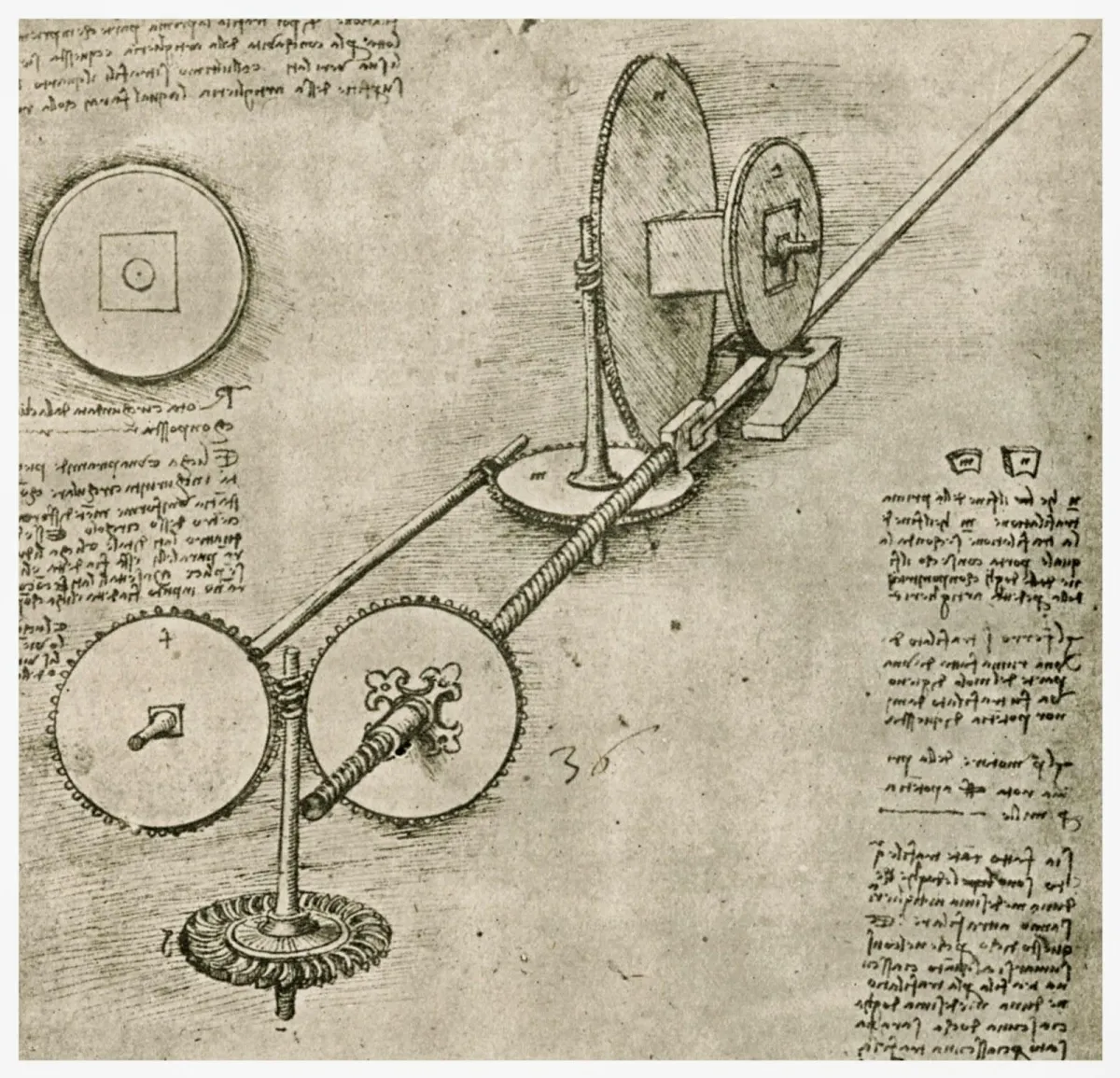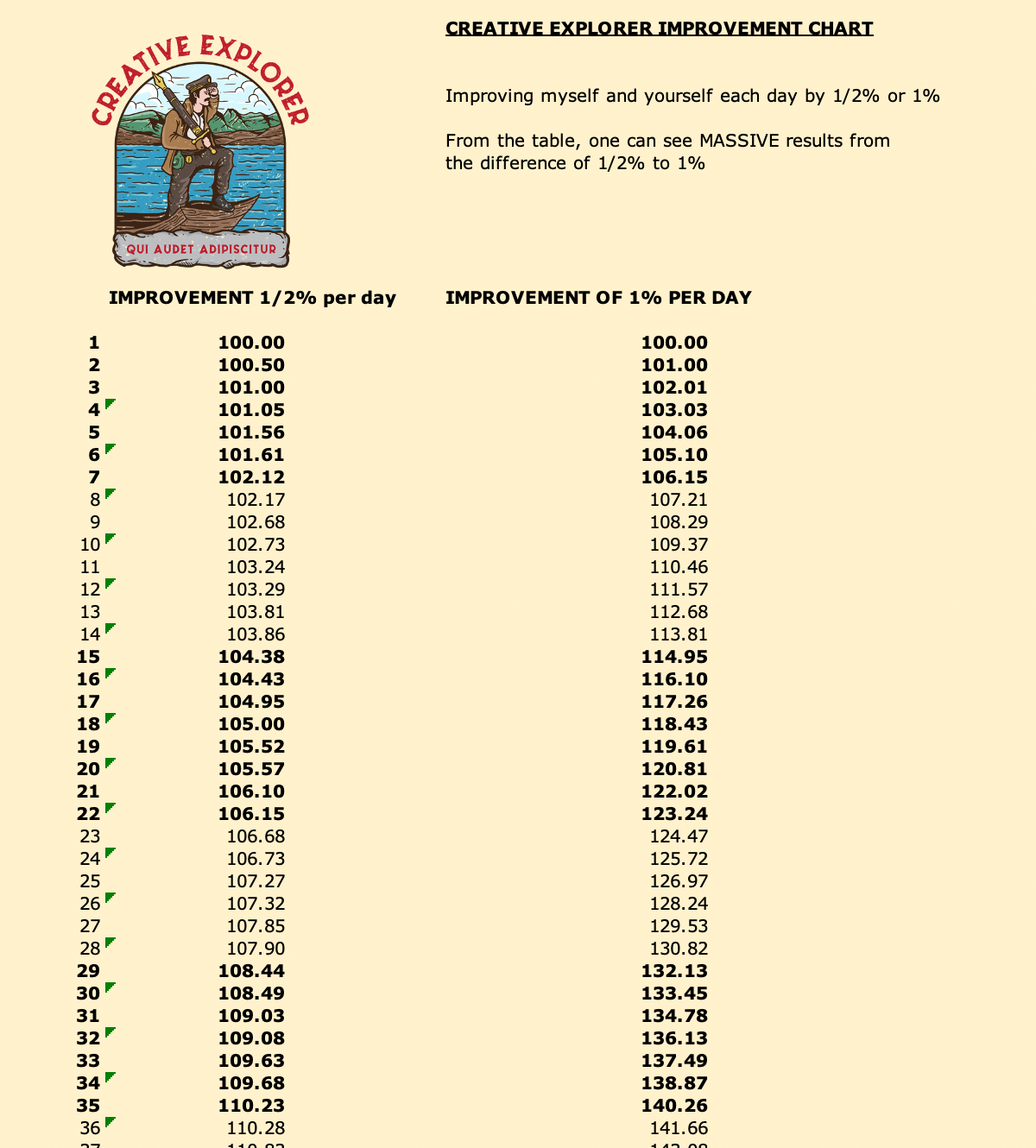
CreativeExplorer-MichaelMandaville.com
I work in Film. I live in Martial Arts. I thrive in Imagination.
Filmmaking & Writing
Scholar Warrior Way
Current Events

How Your Youthful Imagination Will Save Your Adulthood. If…
I remember those long summer days of my youth when imagination ruled my days like a King.
One could pick up a prop like a broomstick or build a platform in a treehouse or an old motorcycle helmet to become a Knight of the Realm, a soldier or an astronaut. The imagination soared through the collaboration with friends - who bought into the very same imaginative framework.
Think of your youthful imagination. Go ahead. Kick your ‘practical’ adult perspective right off its chair and think for a moment.
My imagination carried me through the day as yours must also have done.
On these days with friends and dreams and possibilities, I was a caped crusader, a own hero saving the world, a winning baseball player in the 9th inning, a soldier, knight of the realm, astronaut, firefighter, soldier, cop, doctor, spy, Ninja, secret agent or a Spartan fighting with the Three Hundred.
On these days, living and breathing through my imagination, I was happy. Exuberant. Unstoppable. Valiant. Courageous. Admired. A genius!
This was my emotional state during these youthful days. Think hard. I would think that your emotional state is similar. I think it’s a common human experience of all children during this stage of mental and physical development.
But take a moment and renew and reinvigorate your memories, hopefully finding a similar state of imagination.
Imagination.
Let’s define it first.
Imagination: 1 : the act or power of forming a mental image of something not present to the senses or never before wholly perceived in reality
The key phrase in the definition is “never before wholly perceived in reality.”
We tend to stifle our ‘childlike enthusiasm’ unless this enthusiasm gets such a hold on us early in life. In many cases, this enthusiasm takes hold in the arts and sports where music, dance, acting and various sports are anchored in our bodies and minds, carrying this childlike enthusiasm through into adulthood.
Then Adulthood hits.
“You have to be practical.”
“Time to live in reality.”
“Make a living.”
“Don’t follow a dream. Deal with reality.”
Reality too is a fascinating concept because you can choose your reality. If you are involved in an event, you can choose how you respond to the event. If it is getting fired from a job, you can ‘frame this reality’ in whatever way you want. You are free to do so.
You can blame others, cast about for a ‘victim’ perspective, seek emotional empathy from friends and family for the injustice of it all, etc.,
Now, perhaps there is reasonable grounds for going through this experience. But does it help you learn, grow, change, become better?
You can ‘frame’ the event by realizing you must be get better skills, improve your interpersonal communication skills, study more technology or more.
One of the most profound ‘Reframing’ occurred for a World War II concentration camp survivor, Viktor Frankl. He wrote a book called “Man’s Search for Meaning.”
Germany’s National Socialist concentration camps were notorious and filled with murder, violence, deprivation and more. Millions were murdered.
One camp prisoner did not lament his situation with a depressing resigned outlook but asked: “How do I get out of here?” Working in the crematoriums where the murdered were processed, he hid himself among the piles of dead bodies - laying there for hours - and then snuck out in the night to freedom.
Frankl’s quote is prophetic for the Human Journey. “Everything can be taken from a man but one thing: the last of the human freedoms—to choose one's attitude in any given set of circumstances, to choose one's own way.”
So back to reality.
Reality
Let’s define it.
Reality noun re· al· i· ty rē-ˈa-lə-tē
1 : the quality or state of being real
2a (1) : a real event, entity, or state of affairs
e.g. his dream became a reality
(2) : the totality of real things and events
trying to escape from reality
b: something that is neither derivative nor dependent but exists necessarily

The point between ‘imagination’ and ‘reality’ is liminal which is a fancy word for a fascinating concept. Concepts like imagination and reality are perceived to have a ‘border’ or ‘threshold’ between them. A strong line between the two concepts, but I think the line is more of a grey chalk mark. Liminal means an area over a boundary that straddles both sides. So the distinction between imagination and reality blurs at this point extending to both sides and is, therefore, liminal.
Who says you don’t learn in these articles?
The world of ‘living in reality’ as compared to living in a world ‘never before wholly perceived in reality.’ These opposites fight it out - and the ‘adult’ side wins and becomes more practical, deals with reality, acts ‘adult’ about the situation and more.
We come up with ideas, brainstorm, live in a world of excitement and then - poof - it’s gone. Time to focus, be practical, become an adult, living in the real world…blah, blah, blah.
Let’s think about it a bit more scientifically too.
Let’s examine the brain and thinking. Two sides of the brain exist: the left and right side. The brain doesn’t work in an ‘all or nothing’ manner meaning that when you are a left-brained person that the right-side just turns off and vice-versa. You have a dominant side that you use and rely on more than the other side. In general.
Traits of a Left-Brained Person
The left side of the brain has these dominant qualities:
Language
Logic
Critical thinking
Numbers
Reasoning
What are "left-brained" people like? They are often characterized as logical, analytical, and orderly. The theory goes that that individuals with left-brain dominance excel in careers that involve linear thinking, math, and verbal information. Think accountant, scientist, or computer programmer.
Traits of a Right-Brained Person
According to the dual brain dominance theory, the right side of the brain is better at expressive and creative tasks. Based on these, a right-brained thinker excels at:
Expressing emotions
Creating music
Appreciating color
Using imagination
Intuitive
Creative
Now, both sides work together in many ways. The left hemisphere controls the muscles on the right side of the body. Conversely, the right hemisphere controls the muscles on the left side. This structure is how physical damage to the left side of the brain can affect the right side of the body. So there is a back and forth between the two hemispheres ad one side may be dominant. The ‘either-or’ aspect of hemisphere dominance has come under question and might be outdated with an increasing recognition of give and take between the two hemispheres. Yet people certainly look at others and themselves in this manner.

Leonardo DaVinci’s Vetruvian Man
I was studying Leonardo Da Vinci who had an incredibly systematic approach to knowledge of the study of clouds, human anatomy, nature and more. And yet he used this knowledge in painting, sculpture, drawings and fantastic other worldly inventions.
Remember that phrase above: “never before wholly perceived in reality.”
Well, that’s Leonardo’s entire career. He envisioned the modern day version of the tank, flying machines, the parachute and many inventions for warfare. Italy itself was in the throes and chaos of the Renaissance with constant strife amongst its warring states so Leonardo billed himself as a ‘maker of war machines’. He was practical enough (left-side brain) to advertise himself as a master of war machines with a fantastical bent (right-side brain) to pitch to the Duke of Milan or another powerful lord to hire him.

Leonardo’s War Machines - I took the photo at his house in France
How did Leonardo induce a ‘pipeline’ between the left and right sides of the brain? He juggled and wrote with both hands. He therefore used both side of the brain. Try that. Write or work your phone with your less-dominant hand. That helps your brain as frustrating as it might be.

Leonardo’s Sketches
As you might guess, our childhood’s lived, existed and thrived in the right side of the brain.
Watch a child for thirty minutes when they have their imagination switch turned ‘On’. They sing and make up songs, burst with energy, come up with crazy fun and enthusiastic ideas. They zip from one idea to another, then pick up a toy. Suddenly, the coffee table is a fortress, a forest, a far distant planet. If they weren’t children, they’d be locked up for insanity in the ‘normal’ world of practical adult living.
So we have the sense of Imagination vs. Practical in the two sides of the brain.
But there’s more.
Recently, two other areas of the body have gained recognition for their ‘brain activity’. Both the gut and the heart have received increased attention for their participation in human activity.
Significant discovers about the gut point to neural activity connection with the brain and the gut. We all use the phrase ‘gut instinct’ to describe a feeling which is also characterized as ‘intuition’. This pathway for thoughts and feelings to influence our thinking all the way to the brain. While the gut certainly influences its intestinal tract operation, one can recognize that the biologically active substances produced in the gut affect the brain. The gut-brain axis can influenced talk between the two systems. The gut certainly influences our physical health and, therefore, our emotional state and mood. Such moods including depression, stress and more. Down below is an extensive Psychology today article on the physical attributes of the Gut-Brain Axis.
In any case, you should be aware about how one of these physical details (left-brain) influences your whole body (right-brain) health and outlook.
The second one is the heart. We’ve heard the term “Follow the Heart” which I read as a unique, enthusiastic desire or passion to which one is drawn.
We have so many other phrases which connote the human journey through the heart such as “pour one’s heart out.” According to the article, “The Significance of the Heart-Brain Connection” by Thomas Verny MD (see link below), the heart has a nervous system which exhibits both short and long-term memory functions with about 40,000 neurons. The heart releases dopamine and oxytocin with the latter known as the love or bonding hormone.
I’ve read numerous stories about people who followed their heart, by ‘surrendering’ to their heart’s desire for a world of fulfillment. A very good book called “The Surrender Experiment” details one man’s meditative journey to allow the universe’s wind to lead him and just go with the flow of this unpredictable journey. The book is a fascinating story of Michael Singer who starts meditating and living a simple life and follows - by surrendering - to the flow of the universe. He finds happiness and fulfillment along with unexpected events unfolding.
He tells his own extraordinary story of what happened after a deep spiritual awakening through meditation. He decided to relinquish his deep personal emotional fears and desires and simply let life unfold before him.
This pivotal decision brought him directly into the flow of life and its energetic (read: enthusiasm, energy, flow, excitement, vitality, wonder) possibility. He found great success, was able to overcome various crises and cultivate - most importantly for most people - a profound inner peace.
Inner peace.
But along the way, he moved from a life of solitude to marriage, fatherhood and deep friendships. He became the found of a thriving spiritual community like an ashram in Florida. Eventually, this flow led him to study computers in its early days and he became the CEO of a billion dollar medical software company.
How is that for flow?
I highly recommend reading the book as it allowed me to reframe my thinking of myself and its relationship to the universe and greater human connectivity. I’m not kidding here. The book is worth reading to give yourself a different perspective on life’s possibilities and your outlook for your own life.
So what’s this all mean to you, the Dear Reader?
First of all, you can rekindle - at any age - the ultimate heart-filled desires you have right now. Start that classic car shop? Lead a group on knitting? Learn guitar and play in a band? Write the Great American Novel?
Second, think differently by framing your outlook and ambitions in practical and impractical manners. How many people have picked an impractical avenue and discovered success and fulfillment? One useful way to reframe your thinking is to review the inventions once considered impossible and now taken for granted. Much like one of my favorite Google searches “Things that are true but once considered conspiracy theories”, your search for impossible inventions will confirm for you that the lightbulb, the automobile, television, air travel and the personal computer were once impossible ‘pipe dreams’.
I don’t say this phrase lightly given how much people deride it: Remember your Inner Child. The youthful imagination of wonder, delight, flow, excitement, enthusiasm and more.
Use your imagination and fulfill your craziest dream. That’s exactly what YOU were doing at that age. Fearlessly. Enthusiastically. Imaginatively.
Start Today.
REFERENCES:
Gut-Brain Axis
https://www.psychologytoday.com/us/basics/gut-brain-axis
Brain-Heart Connection
Impossible Inventions:

How Your Youthful Imagination Will Save Your Adulthood. If…
I remember those long summer days of my youth when imagination ruled my days like a King.
One could pick up a prop like a broomstick or build a platform in a treehouse or an old motorcycle helmet to become a Knight of the Realm, a soldier or an astronaut. The imagination soared through the collaboration with friends - who bought into the very same imaginative framework.
Think of your youthful imagination. Go ahead. Kick your ‘practical’ adult perspective right off its chair and think for a moment.
My imagination carried me through the day as yours must also have done.
On these days with friends and dreams and possibilities, I was a caped crusader, a own hero saving the world, a winning baseball player in the 9th inning, a soldier, knight of the realm, astronaut, firefighter, soldier, cop, doctor, spy, Ninja, secret agent or a Spartan fighting with the Three Hundred.
On these days, living and breathing through my imagination, I was happy. Exuberant. Unstoppable. Valiant. Courageous. Admired. A genius!
This was my emotional state during these youthful days. Think hard. I would think that your emotional state is similar. I think it’s a common human experience of all children during this stage of mental and physical development.
But take a moment and renew and reinvigorate your memories, hopefully finding a similar state of imagination.
Imagination.
Let’s define it first.
Imagination: 1 : the act or power of forming a mental image of something not present to the senses or never before wholly perceived in reality
The key phrase in the definition is “never before wholly perceived in reality.”
We tend to stifle our ‘childlike enthusiasm’ unless this enthusiasm gets such a hold on us early in life. In many cases, this enthusiasm takes hold in the arts and sports where music, dance, acting and various sports are anchored in our bodies and minds, carrying this childlike enthusiasm through into adulthood.
Then Adulthood hits.
“You have to be practical.”
“Time to live in reality.”
“Make a living.”
“Don’t follow a dream. Deal with reality.”
Reality too is a fascinating concept because you can choose your reality. If you are involved in an event, you can choose how you respond to the event. If it is getting fired from a job, you can ‘frame this reality’ in whatever way you want. You are free to do so.
You can blame others, cast about for a ‘victim’ perspective, seek emotional empathy from friends and family for the injustice of it all, etc.,
Now, perhaps there is reasonable grounds for going through this experience. But does it help you learn, grow, change, become better?
You can ‘frame’ the event by realizing you must be get better skills, improve your interpersonal communication skills, study more technology or more.
One of the most profound ‘Reframing’ occurred for a World War II concentration camp survivor, Viktor Frankl. He wrote a book called “Man’s Search for Meaning.”
Germany’s National Socialist concentration camps were notorious and filled with murder, violence, deprivation and more. Millions were murdered.
One camp prisoner did not lament his situation with a depressing resigned outlook but asked: “How do I get out of here?” Working in the crematoriums where the murdered were processed, he hid himself among the piles of dead bodies - laying there for hours - and then snuck out in the night to freedom.
Frankl’s quote is prophetic for the Human Journey. “Everything can be taken from a man but one thing: the last of the human freedoms—to choose one's attitude in any given set of circumstances, to choose one's own way.”
So back to reality.
Reality
Let’s define it.
Reality noun re· al· i· ty rē-ˈa-lə-tē
1 : the quality or state of being real
2a (1) : a real event, entity, or state of affairs
e.g. his dream became a reality
(2) : the totality of real things and events
trying to escape from reality
b: something that is neither derivative nor dependent but exists necessarily

The point between ‘imagination’ and ‘reality’ is liminal which is a fancy word for a fascinating concept. Concepts like imagination and reality are perceived to have a ‘border’ or ‘threshold’ between them. A strong line between the two concepts, but I think the line is more of a grey chalk mark. Liminal means an area over a boundary that straddles both sides. So the distinction between imagination and reality blurs at this point extending to both sides and is, therefore, liminal.
Who says you don’t learn in these articles?
The world of ‘living in reality’ as compared to living in a world ‘never before wholly perceived in reality.’ These opposites fight it out - and the ‘adult’ side wins and becomes more practical, deals with reality, acts ‘adult’ about the situation and more.
We come up with ideas, brainstorm, live in a world of excitement and then - poof - it’s gone. Time to focus, be practical, become an adult, living in the real world…blah, blah, blah.
Let’s think about it a bit more scientifically too.
Let’s examine the brain and thinking. Two sides of the brain exist: the left and right side. The brain doesn’t work in an ‘all or nothing’ manner meaning that when you are a left-brained person that the right-side just turns off and vice-versa. You have a dominant side that you use and rely on more than the other side. In general.
Traits of a Left-Brained Person
The left side of the brain has these dominant qualities:
Language
Logic
Critical thinking
Numbers
Reasoning
What are "left-brained" people like? They are often characterized as logical, analytical, and orderly. The theory goes that that individuals with left-brain dominance excel in careers that involve linear thinking, math, and verbal information. Think accountant, scientist, or computer programmer.
Traits of a Right-Brained Person
According to the dual brain dominance theory, the right side of the brain is better at expressive and creative tasks. Based on these, a right-brained thinker excels at:
Expressing emotions
Creating music
Appreciating color
Using imagination
Intuitive
Creative
Now, both sides work together in many ways. The left hemisphere controls the muscles on the right side of the body. Conversely, the right hemisphere controls the muscles on the left side. This structure is how physical damage to the left side of the brain can affect the right side of the body. So there is a back and forth between the two hemispheres ad one side may be dominant. The ‘either-or’ aspect of hemisphere dominance has come under question and might be outdated with an increasing recognition of give and take between the two hemispheres. Yet people certainly look at others and themselves in this manner.

Leonardo DaVinci’s Vetruvian Man
I was studying Leonardo Da Vinci who had an incredibly systematic approach to knowledge of the study of clouds, human anatomy, nature and more. And yet he used this knowledge in painting, sculpture, drawings and fantastic other worldly inventions.
Remember that phrase above: “never before wholly perceived in reality.”
Well, that’s Leonardo’s entire career. He envisioned the modern day version of the tank, flying machines, the parachute and many inventions for warfare. Italy itself was in the throes and chaos of the Renaissance with constant strife amongst its warring states so Leonardo billed himself as a ‘maker of war machines’. He was practical enough (left-side brain) to advertise himself as a master of war machines with a fantastical bent (right-side brain) to pitch to the Duke of Milan or another powerful lord to hire him.

Leonardo’s War Machines - I took the photo at his house in France
How did Leonardo induce a ‘pipeline’ between the left and right sides of the brain? He juggled and wrote with both hands. He therefore used both side of the brain. Try that. Write or work your phone with your less-dominant hand. That helps your brain as frustrating as it might be.

Leonardo’s Sketches
As you might guess, our childhood’s lived, existed and thrived in the right side of the brain.
Watch a child for thirty minutes when they have their imagination switch turned ‘On’. They sing and make up songs, burst with energy, come up with crazy fun and enthusiastic ideas. They zip from one idea to another, then pick up a toy. Suddenly, the coffee table is a fortress, a forest, a far distant planet. If they weren’t children, they’d be locked up for insanity in the ‘normal’ world of practical adult living.
So we have the sense of Imagination vs. Practical in the two sides of the brain.
But there’s more.
Recently, two other areas of the body have gained recognition for their ‘brain activity’. Both the gut and the heart have received increased attention for their participation in human activity.
Significant discovers about the gut point to neural activity connection with the brain and the gut. We all use the phrase ‘gut instinct’ to describe a feeling which is also characterized as ‘intuition’. This pathway for thoughts and feelings to influence our thinking all the way to the brain. While the gut certainly influences its intestinal tract operation, one can recognize that the biologically active substances produced in the gut affect the brain. The gut-brain axis can influenced talk between the two systems. The gut certainly influences our physical health and, therefore, our emotional state and mood. Such moods including depression, stress and more. Down below is an extensive Psychology today article on the physical attributes of the Gut-Brain Axis.
In any case, you should be aware about how one of these physical details (left-brain) influences your whole body (right-brain) health and outlook.
The second one is the heart. We’ve heard the term “Follow the Heart” which I read as a unique, enthusiastic desire or passion to which one is drawn.
We have so many other phrases which connote the human journey through the heart such as “pour one’s heart out.” According to the article, “The Significance of the Heart-Brain Connection” by Thomas Verny MD (see link below), the heart has a nervous system which exhibits both short and long-term memory functions with about 40,000 neurons. The heart releases dopamine and oxytocin with the latter known as the love or bonding hormone.
I’ve read numerous stories about people who followed their heart, by ‘surrendering’ to their heart’s desire for a world of fulfillment. A very good book called “The Surrender Experiment” details one man’s meditative journey to allow the universe’s wind to lead him and just go with the flow of this unpredictable journey. The book is a fascinating story of Michael Singer who starts meditating and living a simple life and follows - by surrendering - to the flow of the universe. He finds happiness and fulfillment along with unexpected events unfolding.
He tells his own extraordinary story of what happened after a deep spiritual awakening through meditation. He decided to relinquish his deep personal emotional fears and desires and simply let life unfold before him.
This pivotal decision brought him directly into the flow of life and its energetic (read: enthusiasm, energy, flow, excitement, vitality, wonder) possibility. He found great success, was able to overcome various crises and cultivate - most importantly for most people - a profound inner peace.
Inner peace.
But along the way, he moved from a life of solitude to marriage, fatherhood and deep friendships. He became the found of a thriving spiritual community like an ashram in Florida. Eventually, this flow led him to study computers in its early days and he became the CEO of a billion dollar medical software company.
How is that for flow?
I highly recommend reading the book as it allowed me to reframe my thinking of myself and its relationship to the universe and greater human connectivity. I’m not kidding here. The book is worth reading to give yourself a different perspective on life’s possibilities and your outlook for your own life.
So what’s this all mean to you, the Dear Reader?
First of all, you can rekindle - at any age - the ultimate heart-filled desires you have right now. Start that classic car shop? Lead a group on knitting? Learn guitar and play in a band? Write the Great American Novel?
Second, think differently by framing your outlook and ambitions in practical and impractical manners. How many people have picked an impractical avenue and discovered success and fulfillment? One useful way to reframe your thinking is to review the inventions once considered impossible and now taken for granted. Much like one of my favorite Google searches “Things that are true but once considered conspiracy theories”, your search for impossible inventions will confirm for you that the lightbulb, the automobile, television, air travel and the personal computer were once impossible ‘pipe dreams’.
I don’t say this phrase lightly given how much people deride it: Remember your Inner Child. The youthful imagination of wonder, delight, flow, excitement, enthusiasm and more.
Use your imagination and fulfill your craziest dream. That’s exactly what YOU were doing at that age. Fearlessly. Enthusiastically. Imaginatively.
Start Today.
REFERENCES:
Gut-Brain Axis
https://www.psychologytoday.com/us/basics/gut-brain-axis
Brain-Heart Connection
Impossible Inventions:

How Your Youthful Imagination Will Save Your Adulthood. If…
I remember those long summer days of my youth when imagination ruled my days like a King.
One could pick up a prop like a broomstick or build a platform in a treehouse or an old motorcycle helmet to become a Knight of the Realm, a soldier or an astronaut. The imagination soared through the collaboration with friends - who bought into the very same imaginative framework.
Think of your youthful imagination. Go ahead. Kick your ‘practical’ adult perspective right off its chair and think for a moment.
My imagination carried me through the day as yours must also have done.
On these days with friends and dreams and possibilities, I was a caped crusader, a own hero saving the world, a winning baseball player in the 9th inning, a soldier, knight of the realm, astronaut, firefighter, soldier, cop, doctor, spy, Ninja, secret agent or a Spartan fighting with the Three Hundred.
On these days, living and breathing through my imagination, I was happy. Exuberant. Unstoppable. Valiant. Courageous. Admired. A genius!
This was my emotional state during these youthful days. Think hard. I would think that your emotional state is similar. I think it’s a common human experience of all children during this stage of mental and physical development.
But take a moment and renew and reinvigorate your memories, hopefully finding a similar state of imagination.
Imagination.
Let’s define it first.
Imagination: 1 : the act or power of forming a mental image of something not present to the senses or never before wholly perceived in reality
The key phrase in the definition is “never before wholly perceived in reality.”
We tend to stifle our ‘childlike enthusiasm’ unless this enthusiasm gets such a hold on us early in life. In many cases, this enthusiasm takes hold in the arts and sports where music, dance, acting and various sports are anchored in our bodies and minds, carrying this childlike enthusiasm through into adulthood.
Then Adulthood hits.
“You have to be practical.”
“Time to live in reality.”
“Make a living.”
“Don’t follow a dream. Deal with reality.”
Reality too is a fascinating concept because you can choose your reality. If you are involved in an event, you can choose how you respond to the event. If it is getting fired from a job, you can ‘frame this reality’ in whatever way you want. You are free to do so.
You can blame others, cast about for a ‘victim’ perspective, seek emotional empathy from friends and family for the injustice of it all, etc.,
Now, perhaps there is reasonable grounds for going through this experience. But does it help you learn, grow, change, become better?
You can ‘frame’ the event by realizing you must be get better skills, improve your interpersonal communication skills, study more technology or more.
One of the most profound ‘Reframing’ occurred for a World War II concentration camp survivor, Viktor Frankl. He wrote a book called “Man’s Search for Meaning.”
Germany’s National Socialist concentration camps were notorious and filled with murder, violence, deprivation and more. Millions were murdered.
One camp prisoner did not lament his situation with a depressing resigned outlook but asked: “How do I get out of here?” Working in the crematoriums where the murdered were processed, he hid himself among the piles of dead bodies - laying there for hours - and then snuck out in the night to freedom.
Frankl’s quote is prophetic for the Human Journey. “Everything can be taken from a man but one thing: the last of the human freedoms—to choose one's attitude in any given set of circumstances, to choose one's own way.”
So back to reality.
Reality
Let’s define it.
Reality noun re· al· i· ty rē-ˈa-lə-tē
1 : the quality or state of being real
2a (1) : a real event, entity, or state of affairs
e.g. his dream became a reality
(2) : the totality of real things and events
trying to escape from reality
b: something that is neither derivative nor dependent but exists necessarily

The point between ‘imagination’ and ‘reality’ is liminal which is a fancy word for a fascinating concept. Concepts like imagination and reality are perceived to have a ‘border’ or ‘threshold’ between them. A strong line between the two concepts, but I think the line is more of a grey chalk mark. Liminal means an area over a boundary that straddles both sides. So the distinction between imagination and reality blurs at this point extending to both sides and is, therefore, liminal.
Who says you don’t learn in these articles?
The world of ‘living in reality’ as compared to living in a world ‘never before wholly perceived in reality.’ These opposites fight it out - and the ‘adult’ side wins and becomes more practical, deals with reality, acts ‘adult’ about the situation and more.
We come up with ideas, brainstorm, live in a world of excitement and then - poof - it’s gone. Time to focus, be practical, become an adult, living in the real world…blah, blah, blah.
Let’s think about it a bit more scientifically too.
Let’s examine the brain and thinking. Two sides of the brain exist: the left and right side. The brain doesn’t work in an ‘all or nothing’ manner meaning that when you are a left-brained person that the right-side just turns off and vice-versa. You have a dominant side that you use and rely on more than the other side. In general.
Traits of a Left-Brained Person
The left side of the brain has these dominant qualities:
Language
Logic
Critical thinking
Numbers
Reasoning
What are "left-brained" people like? They are often characterized as logical, analytical, and orderly. The theory goes that that individuals with left-brain dominance excel in careers that involve linear thinking, math, and verbal information. Think accountant, scientist, or computer programmer.
Traits of a Right-Brained Person
According to the dual brain dominance theory, the right side of the brain is better at expressive and creative tasks. Based on these, a right-brained thinker excels at:
Expressing emotions
Creating music
Appreciating color
Using imagination
Intuitive
Creative
Now, both sides work together in many ways. The left hemisphere controls the muscles on the right side of the body. Conversely, the right hemisphere controls the muscles on the left side. This structure is how physical damage to the left side of the brain can affect the right side of the body. So there is a back and forth between the two hemispheres ad one side may be dominant. The ‘either-or’ aspect of hemisphere dominance has come under question and might be outdated with an increasing recognition of give and take between the two hemispheres. Yet people certainly look at others and themselves in this manner.

Leonardo DaVinci’s Vetruvian Man
I was studying Leonardo Da Vinci who had an incredibly systematic approach to knowledge of the study of clouds, human anatomy, nature and more. And yet he used this knowledge in painting, sculpture, drawings and fantastic other worldly inventions.
Remember that phrase above: “never before wholly perceived in reality.”
Well, that’s Leonardo’s entire career. He envisioned the modern day version of the tank, flying machines, the parachute and many inventions for warfare. Italy itself was in the throes and chaos of the Renaissance with constant strife amongst its warring states so Leonardo billed himself as a ‘maker of war machines’. He was practical enough (left-side brain) to advertise himself as a master of war machines with a fantastical bent (right-side brain) to pitch to the Duke of Milan or another powerful lord to hire him.

Leonardo’s War Machines - I took the photo at his house in France
How did Leonardo induce a ‘pipeline’ between the left and right sides of the brain? He juggled and wrote with both hands. He therefore used both side of the brain. Try that. Write or work your phone with your less-dominant hand. That helps your brain as frustrating as it might be.

Leonardo’s Sketches
As you might guess, our childhood’s lived, existed and thrived in the right side of the brain.
Watch a child for thirty minutes when they have their imagination switch turned ‘On’. They sing and make up songs, burst with energy, come up with crazy fun and enthusiastic ideas. They zip from one idea to another, then pick up a toy. Suddenly, the coffee table is a fortress, a forest, a far distant planet. If they weren’t children, they’d be locked up for insanity in the ‘normal’ world of practical adult living.
So we have the sense of Imagination vs. Practical in the two sides of the brain.
But there’s more.
Recently, two other areas of the body have gained recognition for their ‘brain activity’. Both the gut and the heart have received increased attention for their participation in human activity.
Significant discovers about the gut point to neural activity connection with the brain and the gut. We all use the phrase ‘gut instinct’ to describe a feeling which is also characterized as ‘intuition’. This pathway for thoughts and feelings to influence our thinking all the way to the brain. While the gut certainly influences its intestinal tract operation, one can recognize that the biologically active substances produced in the gut affect the brain. The gut-brain axis can influenced talk between the two systems. The gut certainly influences our physical health and, therefore, our emotional state and mood. Such moods including depression, stress and more. Down below is an extensive Psychology today article on the physical attributes of the Gut-Brain Axis.
In any case, you should be aware about how one of these physical details (left-brain) influences your whole body (right-brain) health and outlook.
The second one is the heart. We’ve heard the term “Follow the Heart” which I read as a unique, enthusiastic desire or passion to which one is drawn.
We have so many other phrases which connote the human journey through the heart such as “pour one’s heart out.” According to the article, “The Significance of the Heart-Brain Connection” by Thomas Verny MD (see link below), the heart has a nervous system which exhibits both short and long-term memory functions with about 40,000 neurons. The heart releases dopamine and oxytocin with the latter known as the love or bonding hormone.
I’ve read numerous stories about people who followed their heart, by ‘surrendering’ to their heart’s desire for a world of fulfillment. A very good book called “The Surrender Experiment” details one man’s meditative journey to allow the universe’s wind to lead him and just go with the flow of this unpredictable journey. The book is a fascinating story of Michael Singer who starts meditating and living a simple life and follows - by surrendering - to the flow of the universe. He finds happiness and fulfillment along with unexpected events unfolding.
He tells his own extraordinary story of what happened after a deep spiritual awakening through meditation. He decided to relinquish his deep personal emotional fears and desires and simply let life unfold before him.
This pivotal decision brought him directly into the flow of life and its energetic (read: enthusiasm, energy, flow, excitement, vitality, wonder) possibility. He found great success, was able to overcome various crises and cultivate - most importantly for most people - a profound inner peace.
Inner peace.
But along the way, he moved from a life of solitude to marriage, fatherhood and deep friendships. He became the found of a thriving spiritual community like an ashram in Florida. Eventually, this flow led him to study computers in its early days and he became the CEO of a billion dollar medical software company.
How is that for flow?
I highly recommend reading the book as it allowed me to reframe my thinking of myself and its relationship to the universe and greater human connectivity. I’m not kidding here. The book is worth reading to give yourself a different perspective on life’s possibilities and your outlook for your own life.
So what’s this all mean to you, the Dear Reader?
First of all, you can rekindle - at any age - the ultimate heart-filled desires you have right now. Start that classic car shop? Lead a group on knitting? Learn guitar and play in a band? Write the Great American Novel?
Second, think differently by framing your outlook and ambitions in practical and impractical manners. How many people have picked an impractical avenue and discovered success and fulfillment? One useful way to reframe your thinking is to review the inventions once considered impossible and now taken for granted. Much like one of my favorite Google searches “Things that are true but once considered conspiracy theories”, your search for impossible inventions will confirm for you that the lightbulb, the automobile, television, air travel and the personal computer were once impossible ‘pipe dreams’.
I don’t say this phrase lightly given how much people deride it: Remember your Inner Child. The youthful imagination of wonder, delight, flow, excitement, enthusiasm and more.
Use your imagination and fulfill your craziest dream. That’s exactly what YOU were doing at that age. Fearlessly. Enthusiastically. Imaginatively.
Start Today.
REFERENCES:
Gut-Brain Axis
https://www.psychologytoday.com/us/basics/gut-brain-axis
Brain-Heart Connection
Impossible Inventions:

Did You Know...
... if you improve 1/2% each day, then you will be 267% better over one year? Who can compete with that?

Setting Yourself Up for Success usually doesn't mean one big jump but rather incremental change day after day. Think of it like a ocean wave, moving far out in the Pacific with almost an undetectable push...finally with the power and grace of an ocean wave onto the beach. Create your own metaphor to embrace small habits with a huge future impact.




Facebook
Instagram
X
LinkedIn
Youtube
Website